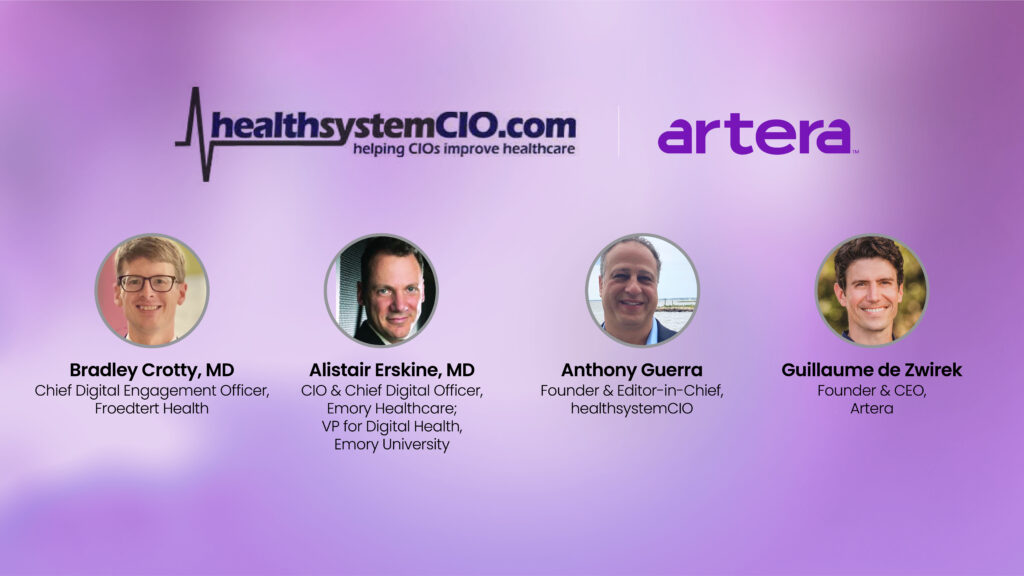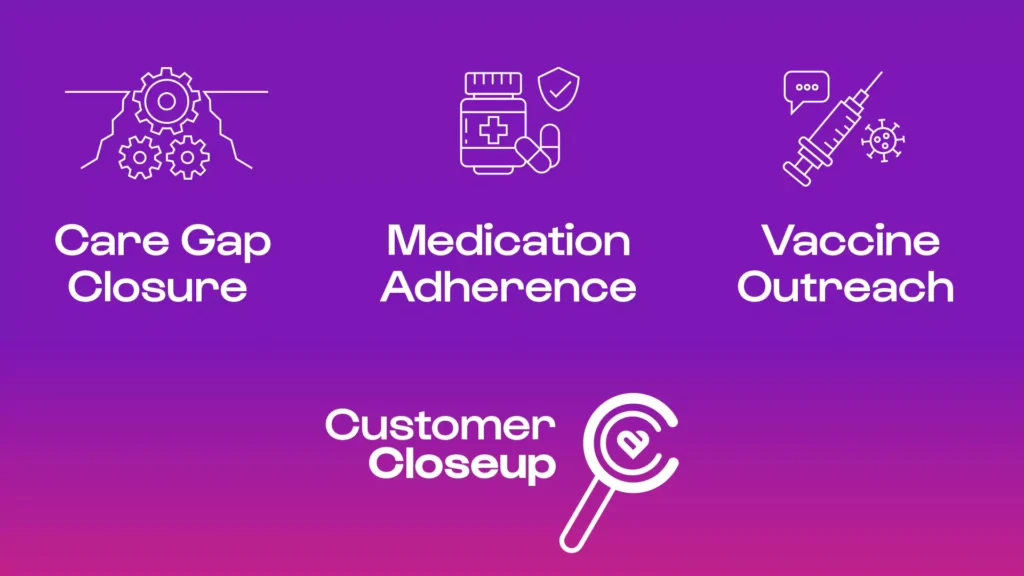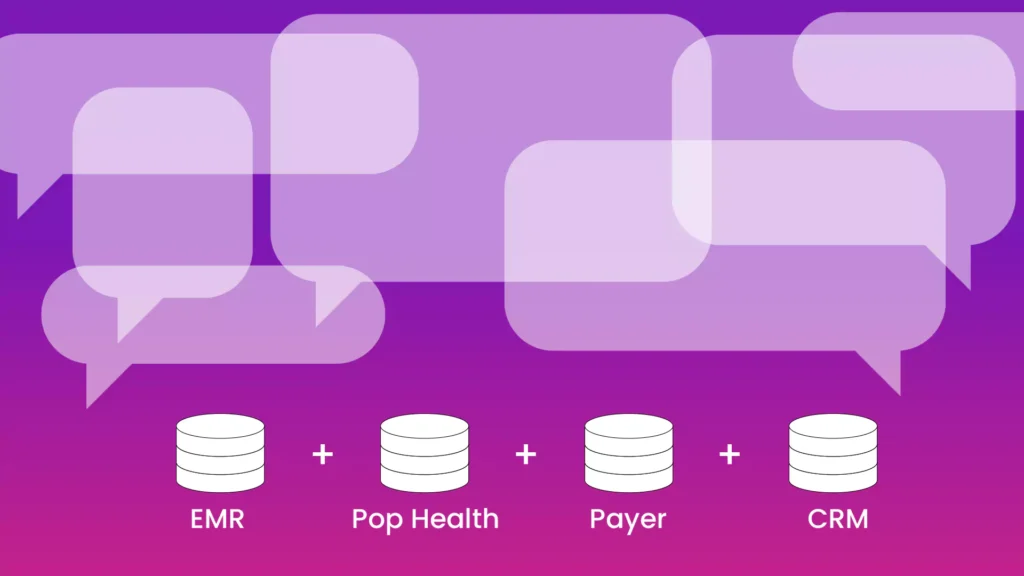At a Glance:
- The digital health movement has witnessed a proliferation of patient engagement and patient communication tools, leading to a complex landscape with multiple apps and channels for patient communications.
- Healthcare organizations face challenges in effectively engaging patients due to the lack of visibility, coordination and the proliferation of disparate tools in digital health communications.
- To address these challenges, experts highlight the importance of establishing a solid governance structure, breaking down silos, and leveraging tools like customer relationship management (CRM) platforms and patient communication platforms – all while prioritizing patient consent and data security to ensure a balanced approach in patient engagement.
“Digital Transformation.” We’ve all seen this phrase countless times over the past few years, I’m sure. It’s no secret the healthcare industry has undergone a significant transformation, going from a slow adopter of new technology to a leader in digital innovation. One of the most prominent shifts has been the explosion of patient engagement tools – something that only continues to grow.
Think about it: each and every day, providers are using a variety of patient communication tools to connect with their patients on a number of different topics. According to Alistair Erskine, MD, Chief Information and Digital Officer at Emory Healthcare, “Everyone is trying to engage and reach the patient,” he said in a recent healthsystemCIO panel discussion, also featuring leaders Bradley Crotty, MD, Chief Digital Engagement Officer, Froedtert Health and Guillaume de Zwirek, CEO, Artera.
So, when everyone is trying to reach the patient, how does anyone reach the patient? Ultimately, this situation has given rise to a new challenge for CIOs, CDOs, and other leaders: how to cut through the noise to most effectively engage patients. According to Crotty, this task is far from simple as health systems essentially act as “collections of multiple businesses that each want to communicate and market” to patients – all with their own communication and marketing objectives. This fragmentation in strategy can make the landscape akin to a tangled web of interests.
Erskine believes the more tools that are purchased, the messier it becomes: “You would’ve thought that with all the investment made in platform-based EHRs, this would’ve gotten better. It hasn’t. In fact, in some cases, I think it’s gotten worse.” From marketing to legal to IT engineering, there are numerous parties involved in the process — oftentimes before an individual becomes a patient. Therefore, it should come as little surprise that some organizations are opting to “ignore the problem and pepper the patient with messages,” he noted.
Agreeing, De Zwirek stated that if teams aren’t able to “coordinate, synthesize, and collect consent,” or make sure that preferences are accounted for, “you’re better off not communicating than doing too much and frustrating your patients.”
That being said, organizations that want to keep up with other systems and provide quality care cannot just bow out, according to the panelists. It then becomes a question of piecing together a comprehensive patient communications strategy that effectively reaches the patient while not overwhelming them with endless alerts.
Lack of visibility
Although the issue is indeed complex, it boils down to a simple factor: lack of visibility, said Erskine. “We don’t have enough convenient ways of getting feedback other than asking for it, which can actually aggravate the situation.” Much of the time, clinicians don’t know a problem exists until a formal complaint is filed, he noted. “It’s something we don’t measure well; and what you don’t measure, you can’t see.”
You also can’t improve it, said de Zwirek, noting that without proper communication, the staff can’t see whether a patient has followed through with lab orders or taken prescriptions. Patients, on the other hand, are often forced to fill out the same information multiple times, whether in digital or analog formats, because of the lack of coordination. “If you give people too many alerts, you don’t know which ones they’re going to act on,” he noted. “It’s the patient equivalent of alert fatigue.”
For leaders who have been pushing for digital transformation, that type of regression isn’t acceptable. In fact, Froedhert went so far as to sunset a pre-visit planning tool because it overlapped with another too and thus was hindering, and not helping, the e-check-in experience. “We made an intentional decision to simplify and improve the patient experience, even if it meant giving up some helpful functionality,” Crotty stated. “I’ve been waiting for technology to solve this, but really, it’s a socio-technical problem.”
“An evolving target”
Fortunately, there are solutions that can potentially provide relief, including customer relationship management (CRM) tools, said Erskine. Although their deployment is still fairly novel in healthcare, he believes “they should probably play a much bigger role” in call centers. However, a great deal of backend work is required to integrate with EHR software and keep the two in sync.
Crotty concurred, adding that healthcare organizations are “still trying to figure out how to use them and how to orchestrate campaigns,” he said. “I think it’s an evolving target.”
Artera, however, believes it is making significant strides with its recent platform update, Artera Harmony, an open system that orchestrates patient communication by integrating a hospital’s digital vendors — including EHRs and digital tools — and provides insights and benchmarks that can be viewed on a dashboard. The platform leverages AI and automation functionality to open a dialogue between stakeholders. The idea, said de Zwirek, was to “create an orchestration rule” that can create a better experience for patients, particularly those with chronic conditions. “If a patient comes in for multiple visits, we’re able to bundle it together and give an after-visit summary.”
His goal when he started the company in 2015 — after experiencing a health scare — was to disentangle what has become “a hairy problem,” he said. “This is so nuanced. You have all these different service lines and all of their unique workflows, and these service lines might disagree on what’s more important to the patient. How do you decide that?”
Breaking down silos
While there’s no magic bullet, there is an approach that can start to yield some answers, and it starts by establishing a solid governance structure. “It requires a lot of coordination,” said Crotty. For business and technology folks, that means finding some common ground — and realizing that everything can’t go through the EHR, particularly with more digital tools being adopted to fill niche spaces.
“You have to develop some line of sight around that,” he said, noting that patient communication is chartered directly under clinical governance. That way, “when something is decided, it gets put into the clinical informatics and the information technology pieces.”
De Zwirek agreed, adding that committees should include representatives from marketing, analytics, operations, and practice administrators from all clinics. “I don’t know that there’s a way around that,” he said, “because there are so many stakeholders involved in the patient’s journey. If this happens in silos, it will never get fixed.”
Of course, it doesn’t hurt to have a platform like Artera’s that can help orchestrate the digital tools being used by building out “rules and air traffic controls to help deliver a better experience,” de Zwirek said. “You build the governance tool, and we have the technology tool, which is a small part of it, but that guarantees visibility.”
Another important piece is consent, which can be particularly challenging given the “natural barriers to engagement” that exist in healthcare, according to de Zwirek. Adding a second and possibly even a third layer can enable patients to receive personal information via free text, which he believes would be a step in the right direction. “It’s all about patient choice,” he said. “There are additional dimensions to lowering barriers and getting better outcomes.”
There are also, however, privacy and security concerns that must be carefully considered, according to Crotty, who believes it’s certainly possible to communicate with patients in the manner of their choosing — provided the right steps are taken to ensure data are encrypted. “We have to be a lot more granular with understanding their preferences and being very explicit around consent, and doing it in a way that everyone, including the OCR, agrees with. We have to move into that space.”
Failure to address these challenges can have serious consequences, including patients seeking alternative options. Hence, the imperative is clear: healthcare organizations must navigate the complex patient engagement landscape with a coordinated, strategic approach that places the patient’s experience and preferences at the forefront. In doing so, they can achieve the delicate balance required for success in the ever-evolving realm of digital health communications and patient communications.
To view the recording of this webinar, Improving Patient Communications as the Cornerstone of Your Patient Experience Strategy (Sponsored by Artera), please click here.



